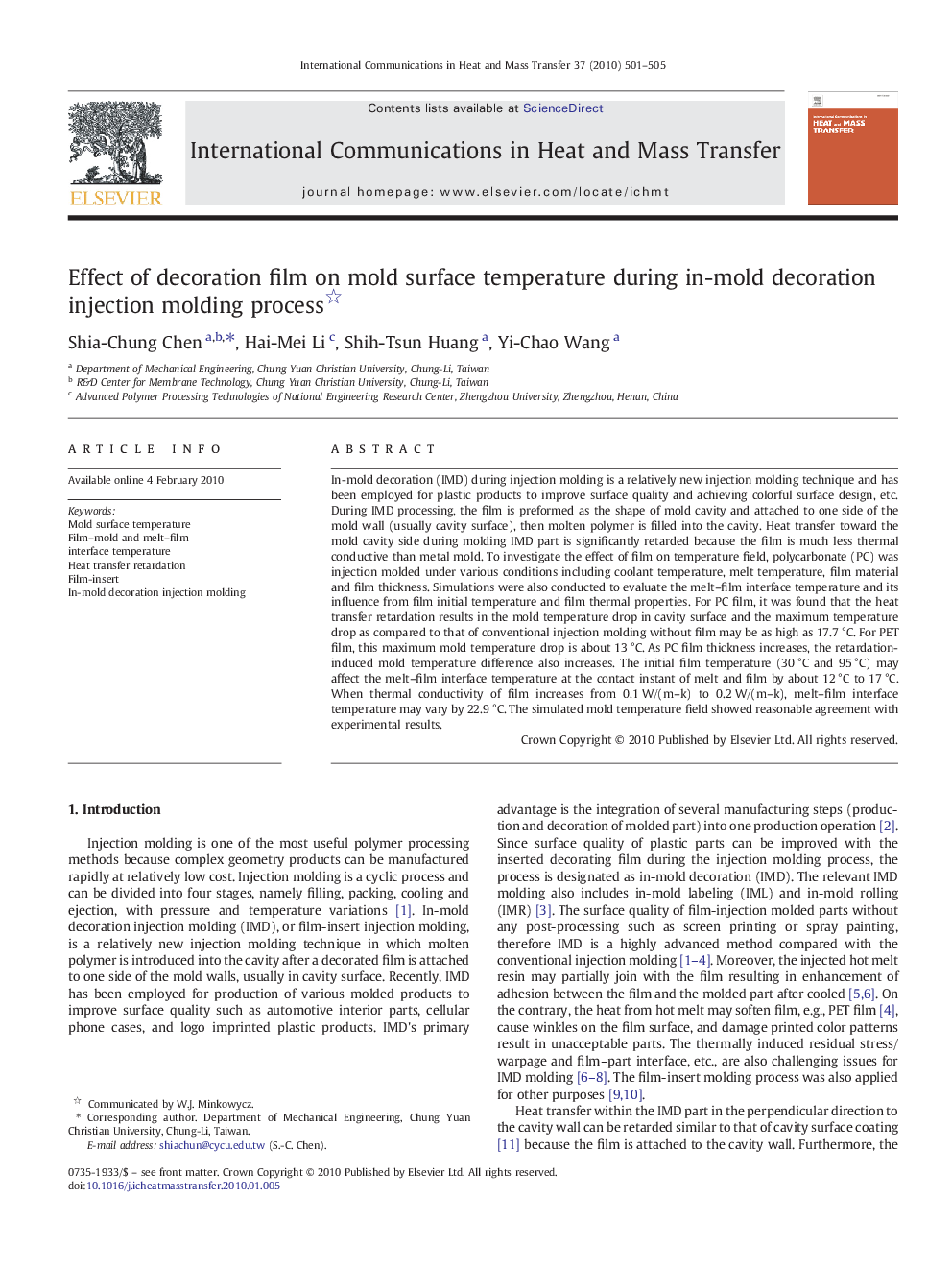| کد مقاله | کد نشریه | سال انتشار | مقاله انگلیسی | نسخه تمام متن |
|---|---|---|---|---|
| 654101 | 885229 | 2010 | 5 صفحه PDF | دانلود رایگان |

In-mold decoration (IMD) during injection molding is a relatively new injection molding technique and has been employed for plastic products to improve surface quality and achieving colorful surface design, etc. During IMD processing, the film is preformed as the shape of mold cavity and attached to one side of the mold wall (usually cavity surface), then molten polymer is filled into the cavity. Heat transfer toward the mold cavity side during molding IMD part is significantly retarded because the film is much less thermal conductive than metal mold. To investigate the effect of film on temperature field, polycarbonate (PC) was injection molded under various conditions including coolant temperature, melt temperature, film material and film thickness. Simulations were also conducted to evaluate the melt–film interface temperature and its influence from film initial temperature and film thermal properties. For PC film, it was found that the heat transfer retardation results in the mold temperature drop in cavity surface and the maximum temperature drop as compared to that of conventional injection molding without film may be as high as 17.7 °C. For PET film, this maximum mold temperature drop is about 13 °C. As PC film thickness increases, the retardation-induced mold temperature difference also increases. The initial film temperature (30 °C and 95 °C) may affect the melt–film interface temperature at the contact instant of melt and film by about 12 °C to 17 °C. When thermal conductivity of film increases from 0.1 W/(m–k) to 0.2 W/(m–k), melt–film interface temperature may vary by 22.9 °C. The simulated mold temperature field showed reasonable agreement with experimental results.
Journal: International Communications in Heat and Mass Transfer - Volume 37, Issue 5, May 2010, Pages 501–505